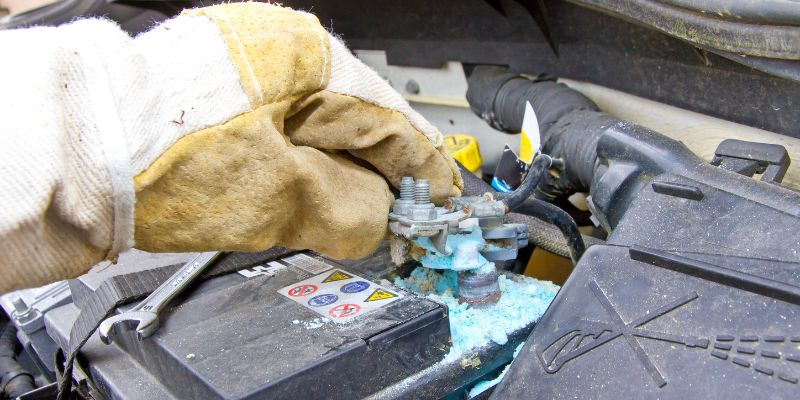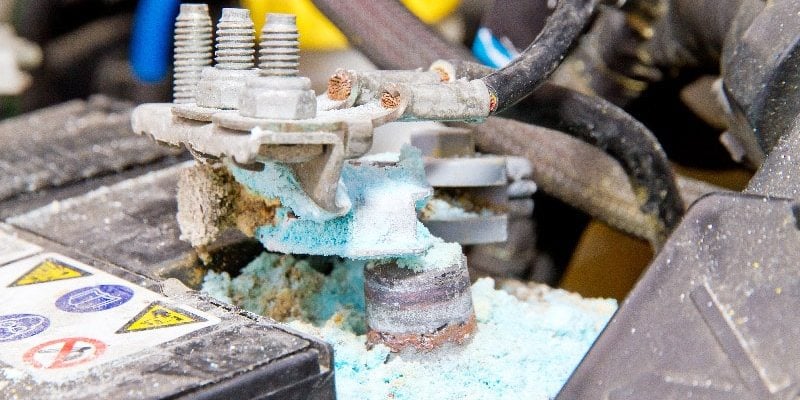Sulfation is one of the most common problems that affect battery life. In this article, we'll talk about what sulfation is, how it affects your batteries, and how you can prevent it from happening.
What is a sulfated battery?
Batteries generate lead sulfate during discharge. Battery sulfation occurs when lead sulfate present on the battery plates after discharge is not converted back to usable lead during charging service. When this happens, lead sulfate will evolve into crystals that can build up on the plates of your battery to a point where it will not accept recharge or deliver expected performance.
Sulfate crystals form when you leave your battery in storage during winter months or when it's sitting unused for weeks, causing them to discharge completely — and eventually turn white as they release their sulfur into the electrolyte solution inside your battery casing.
How do you know if your battery is sulfated?
So, how do you know if your battery is sulfated? Here are some things you may have noticed.
The battery won't charge or hold a charge
You may have noticed that your car's battery won't hold a charge for very long and has to be boosted or charged more frequently than usual. This can be caused by sulfation on the plates in your battery if it has been left uncharged for an extended period of time (more than three months).
The car won't start when cold weather hits
A sulfated battery will not have enough power to start an engine in cold weather conditions because its plates are already stressed from sulfation, its age or parasitic loads that discharge power even when the vehicle is powered off. If this happens often, you probably need to replace the car’s battery with a new and higher capacity battery that will ensure you have starting power when you need it.
What does a sulfated battery look like?
The most common sign of sulfation is a white powdery substance on the battery plates. This may be visible with a black light, but it can also be detected by having the battery tested by a qualified technician. Always exercise care when you examine batteries on your own: wear eye protection and protect the battery and yourself from short-circuits during inspection.
Sulfated batteries can also look completely normal at first glance; however, if you look closely at any of their cells (the individual compartments inside each unit), small deposits of lead sulfate will be visible on top of the battery’s plates. Over time, these deposits will prevent your battery from holding its charge and will ultimately require you to replace the sulfated battery.
Can You Charge a Sulfated Battery?
Can you charge a sulfated battery? Yes, but it will take a long time, and your battery will hold less power than it used to. If you want to do this yourself, you'll need to use special equipment that can charge sulfated batteries. If you don't have access to this equipment, taking the battery in for professional help may be your best option.
How to avoid sulfation in your car battery
If you want to avoid sulfation in your car battery, there are some steps that you can take. First of all, keep the battery charged.
Additional steps to help prevent sulfated batteries include the following steps:
- Check batteries regularly for terminal corrosion and the presence of dried electrolyte on the battery container.
- Clean battery containers and terminal connections using a solution consisting of one gallon of water and one pound of baking soda. Immerse the battery with this solution and remove corrosion with a rag. Rinse the battery with water when finished.
- Keep batteries protected from direct high heat sources like direct sunlight or hot garages where temperatures can reach upwards of 120°F (49°C).
Avoid Sulfation by Keeping up with Maintenance
Sulfation can be a common problem for batteries, and it can be avoided if you keep up with maintenance. A good rule of thumb is to check the voltage of your battery at least once a month when the vehicle is unused. If the voltage reading is below 12 volts, then it's time to charge the battery fully before attempting any other form of maintenance. A best practice for maintaining vehicle batteries while in storage is to connect a small battery maintainer device such as an automatic trickle charger — which after being connected to an AC power source — will maintain the battery’s state of charge at 100%.
How to Fix a Sulfated Battery
Experienced mechanics understand that there are no easy ways to reverse sulfation. However, prevention is the best cure, and battery owners can apply this principle by fully recharging and cleaning batteries before seasonal storage, disconnecting batteries from the application before leaving a vehicle unused for a period of time, and by isolating parasitic loads on your vehicle or application’s system.
Sulfated batteries are a common problem for many people. It's essential to understand the causes of sulfation to prevent it from happening in the first place or know what steps to take if it does occur.











